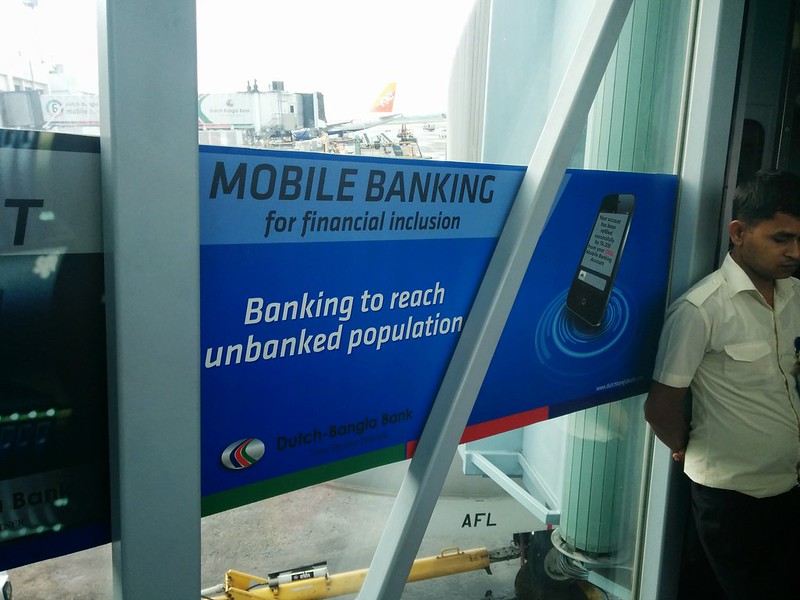
|
(Click on image or file to view publication) |
The evolution of technology and digital transformation have revolutionised many aspects of life. One of those aspects is how we bank. Traditionally, people visited physical banks to make deposits, withdrawals, and send money transfers. With the adoption of mobile banking, the traditional banking experience is fading away. According to Allied Market Research, the global mobile banking market was valued at $715.3 million in 2018 and is expected to reach $1.8 billion by 2026.
However, it is crucial to keep in mind that mobile technology adoption does not necessarily come hand in hand with adoption of mobile banking services. In a study Poverty and Migration in the Digital Age: Experimental Evidence on Mobile Banking in Bangladesh for instance, 99% of the participants had mobile phones, but only 11% had access to any bank account.
Big cities come calling
The study was conducted by a research team including Assistant Professor Saravana Ravindran from the Lee Kuan Yew School of Public Policy (LKYSPP), and aimed to bridge the economic gaps using mobile banking in the rural area of Gaibandha and the urban area of Dhaka. As the capital of Bangladesh, Dhaka's population is predicted to reach 27 million people by 2030. The adoption of mobile banking provides opportunities for the movement of people to cities including Dhaka, and the efficient movement of money to rural areas.
Several push and pull factors influence the decision to migrate from rural areas to cities. Pull factors include the hope of having a better standard of living and employment opportunities. Cities are often seen as the centre of economic activity and open opportunities for higher wages. On the other hand, poor living conditions in rural areas may also lead to a lack of employment and educational opportunities, serving as push factors for migration. Most people are willing to take a chance and migrate in the hope of better living conditions. This sentiment is supported by a UN survey that predicted 68% of the world's population will live in urban cities by 2050.
Challenges to Mobile Banking Adoption in Rural Areas
The widespread adoption of mobile technologies does not necessarily come hand in hand with the adoption of mobile banking. One of the factors for this was the language barrier, where most mobile banking applications use the English language in their menus. This can be intimidating for most users, especially in poorer rural areas like Gaibandha. "The nature of the service and the use of English made the technology intimidating to villagers with limited education," says Prof Ravindran.
The study addressed this issue by teaching participants the basic steps and protocols, providing hands-on practice by sending transfers five times to establish a degree of comfort, and sharing translations of menus into Bangla (Bengali). Prof Ravindran added, "If needed, we facilitated the sign-up process. In the end, our study shows that these barriers were not insurmountable."
Impact of mobile-banking adoption in rural and urban areas
Mobile banking services have made it easier for migrant workers to send money to their loved ones back home in an instant. Utilising mobile banking for a year resulted in a 26% increase in urban to rural remittances, thus, enabling rural consumption to increase by 7.5% and extreme poverty fell. "Rural households borrowed less, were more likely to save, and fared better in the lean season. Moreover, the rate of child labour fell, whereas the hours of study improved," explains Prof Ravindran.
Like any other technology and innovation, mobile banking may also have drawbacks. As it becomes easier to transfer money, migrant workers might feel pressure to work longer hours to send more remittances to their families back home. This could result in declining physical health and increased stress levels that may be harmful, a sentiment shared by Prof Ravindran. "Migrant workers who actively used the bKash mobile banking service were 11 percentage points less likely to be below the poverty line, but also saw poorer physical and emotional health."
As people move to the cities in the hope of a better life, adopting technologies such as mobile banking could help to bridge the economic gap between rural and urban areas. However, it may also come with trade-offs, including a toll on the physical and emotional health of migrant workers.
(Photo credit: Ammalu)